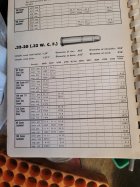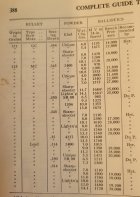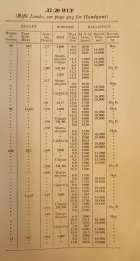SAAMI pressure is 16,000 CUP, PSI would not be that different, certainly not almost double. A good comparison would be 38 Special, one of the few pistol rounds that is listed both ways, CUP and Piezo transducer at 17,000. Right where most Blackpowder pistol cartridges listed.
The above data looks like it’s from Sharpe’s book, pressure listed may or may not be safe, written long before strong and weak action loads were separated that exceeded SAAMI guidelines.
Pistol pressure data starts on page 9.
If you balance that out against 25-20 pressures, it gets real confusing, same case is rated 28,000 and was also available and very popular in the Low Wall. Note that the 32-20 is more often considered a pistol cartridge, while the 25-20 is considered a rifle cartridge. 28,000 PSI is inline with Blackpowder rifle cartridges.
The 1885 action is extremely strong as designed. The problem is it was designed as the
High Wall. The Low Wall was more or less an after thought.
Small cartridges like the rimfire and pistol cartridges of the day are awkward to load in the High Wall, so the solution was to cut about 1/3 of the frame off that supports the breech block. Severely weakening the action.
They don’t seem to have catastrophic failures without cracking the frame at the mortise first, shooting heavy loads. It’s not the chamber pressure directly that is the problem. It’s the bolt thrust against a breech block that is no longer supported. The metallurgy is just not up to high pressure.
It is fine with Blackpowder pistol and smaller rifle load pressures but like a 1st generation Colt single action, it did not make the transition to the pressures of smokeless powder without problems.
SAAMI pressures reflect this in Blackpowder cartridges in the smokeless world.
As far as brass strength of 32-20, same case is used for 218 Bee, 40,000 psi + is not a problem.
Plenty of things to think about.














